-
 Bitcoin
Bitcoin $107,397.3430
-0.20% -
 Ethereum
Ethereum $2,467.5633
1.33% -
 Tether USDt
Tether USDt $1.0002
0.01% -
 XRP
XRP $2.1994
0.71% -
 BNB
BNB $655.8723
1.07% -
 Solana
Solana $157.3780
4.63% -
 USDC
USDC $1.0000
0.02% -
 TRON
TRON $0.2792
1.23% -
 Dogecoin
Dogecoin $0.1645
0.50% -
 Cardano
Cardano $0.5666
1.83% -
 Hyperliquid
Hyperliquid $39.8730
3.91% -
 Bitcoin Cash
Bitcoin Cash $514.7673
5.02% -
 Sui
Sui $2.7969
-0.51% -
 Chainlink
Chainlink $13.2880
0.07% -
 UNUS SED LEO
UNUS SED LEO $9.1148
-0.60% -
 Avalanche
Avalanche $17.9247
0.34% -
 Stellar
Stellar $0.2351
-0.98% -
 Toncoin
Toncoin $2.9456
2.69% -
 Shiba Inu
Shiba Inu $0.0...01144
-0.74% -
 Litecoin
Litecoin $85.9064
-0.62% -
 Hedera
Hedera $0.1495
1.47% -
 Monero
Monero $319.0339
3.82% -
 Polkadot
Polkadot $3.3940
-0.40% -
 Dai
Dai $1.0000
0.01% -
 Ethena USDe
Ethena USDe $1.0003
0.00% -
 Bitget Token
Bitget Token $4.5223
-1.95% -
 Uniswap
Uniswap $7.1384
-0.02% -
 Aave
Aave $272.7534
0.72% -
 Pepe
Pepe $0.0...09836
2.57% -
 Pi
Pi $0.5107
-2.06%
Is it credible to break through the upper track after the Bollinger Bands close but the volume is insufficient?
A narrowed Bollinger Band breakout with low volume often signals a weak or unsustainable move, especially in volatile crypto markets.
Jun 30, 2025 at 06:07 pm
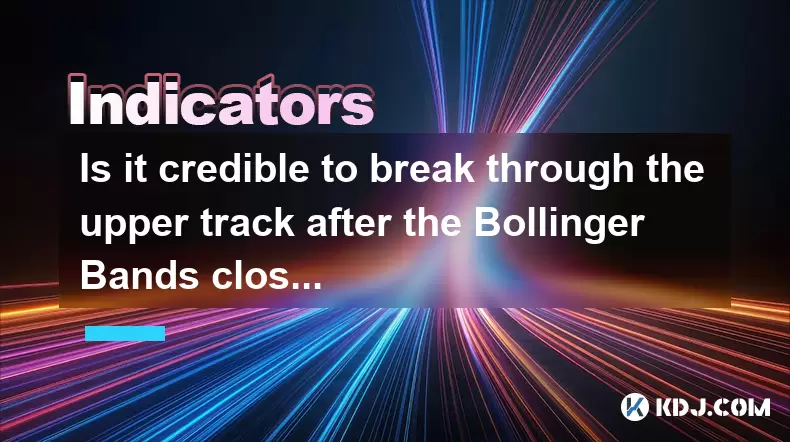
Understanding Bollinger Bands and Their Role in Technical Analysis
Bollinger Bands are a popular technical analysis tool used by traders to assess volatility and potential price reversals. They consist of three lines: a simple moving average (SMA) in the middle, and two standard deviation bands above and below it. The upper band represents overbought conditions, while the lower band indicates oversold conditions. When prices move toward or beyond these bands, many traders interpret this as a signal for potential reversal or continuation.
A breakout occurs when the price moves outside the upper or lower band. In this context, we're focusing on an upper track breakout after the Bollinger Bands have "closed," meaning that the bands have narrowed due to reduced market volatility. This contraction is often referred to as a "squeeze" and is seen as a precursor to a significant price movement.
However, not all breakouts are created equal. Volume plays a critical role in confirming whether such a breakout is credible or merely a false signal.
The Significance of Volume in Confirming Breakouts
Volume is one of the most essential indicators in validating price movements. High volume during a breakout suggests strong participation from traders and investors, increasing the likelihood that the move is genuine. Conversely, low volume can indicate a lack of conviction, making the breakout less reliable.
When Bollinger Bands close — indicating a period of low volatility — and then the price breaks out of the upper band with insufficient volume, this may signal a weak or unsustainable move. Traders often look for a surge in trading volume to confirm that institutional players or large market participants are behind the breakout.
In the cryptocurrency market, where liquidity can vary significantly across assets, volume becomes even more crucial. A breakout on low volume could easily be manipulated or triggered by automated bots without real market consensus.
Interpreting a Narrowed Bollinger Band Pattern
A narrowing of the Bollinger Bands is commonly known as the "Bollinger Squeeze." This pattern signals that a period of consolidation is ending and that a sharp price movement is likely to follow. However, it does not indicate direction — the breakout could be either upward or downward.
When the squeeze resolves with a breakout to the upside, especially through the upper band, traders watch for several key factors:
- The strength of the move relative to recent price action
- Whether candlesticks form long wicks or strong closes
- Whether other indicators like RSI or MACD support the move
If the breakout occurs but volume remains flat or below average, this raises concerns about the legitimacy of the move. It might suggest that retail traders are pushing the price without sufficient backing from larger players.
How to Analyze Price Action After a Low-Volume Upper Band Breakout
To evaluate whether a breakout is credible, traders should examine the following elements:
- Candlestick confirmation: Look for bullish candles that close near their highs immediately after the breakout. Long green bodies with minimal upper shadows are ideal.
- Pullback behavior: After breaking out, the price may retest the breakout level. If it holds and continues higher, that’s a positive sign. If it fails to hold, the breakout may be invalid.
- Support from other indicators: Check momentum oscillators like RSI or Stochastic to see if they’re also trending upwards. Divergences here can warn of a false breakout.
It's also important to monitor how quickly the price returns to the Bollinger Bands after the breakout. If it quickly falls back inside the bands, especially without strong volume, the move lacks momentum and may reverse.
Case Study: Evaluating a Real-World Example in Cryptocurrency Trading
Let’s consider a hypothetical scenario involving a mid-cap altcoin, XYZ Coin, which has been consolidating within tight Bollinger Bands for several days. Suddenly, the price surges past the upper band, suggesting a potential breakout. However, volume remains muted compared to its 10-day average.
Traders observing this situation would do the following:
- Check if the candle that broke out was a strong bullish candle
- Monitor whether subsequent candles continued the trend or showed signs of rejection
- Cross-reference with volume data and order book depth
If the next few candles fail to make new highs and instead fall back into the Bollinger Bands, this confirms a fakeout. In contrast, if the price maintains itself above the upper band and begins to ride along it with expanding bands, the breakout is likely valid.
In crypto markets, such scenarios are common due to high volatility and frequent manipulation attempts. Therefore, understanding the interplay between Bollinger Bands and volume is crucial for accurate trade decisions.
FAQs
Q: What is considered "insufficient volume" in a breakout scenario?
A: Insufficient volume typically means that the trading volume during the breakout is significantly lower than the average volume over the previous 10–20 periods. There’s no universal threshold, but comparing current volume to historical levels helps determine its significance.
Q: Can a breakout still be valid if volume increases after the initial move?
A: Yes, sometimes volume lags the breakout slightly. If there's a clear continuation and volume picks up in the hours or days following the breakout, it can still be valid. However, delayed volume doesn't eliminate the risk of a false signal.
Q: Are Bollinger Bands more effective in certain timeframes?
A: Bollinger Bands tend to provide clearer signals on higher timeframes like 4-hour or daily charts. On shorter timeframes, they can generate excessive noise, especially in volatile crypto markets.
Q: Should I avoid all breakouts with low volume?
A: Not necessarily. While low volume increases the risk of a false breakout, some strong moves can start quietly before gaining traction. Use additional tools like support/resistance levels or order flow analysis to filter signals.
Disclaimer:info@kdj.com
The information provided is not trading advice. kdj.com does not assume any responsibility for any investments made based on the information provided in this article. Cryptocurrencies are highly volatile and it is highly recommended that you invest with caution after thorough research!
If you believe that the content used on this website infringes your copyright, please contact us immediately (info@kdj.com) and we will delete it promptly.
- Unlock Crypto Riches: Mining Platforms & Starter Bonuses - Your Gateway to Digital Gold!
- 2025-06-30 22:30:11
- Dogecoin, Cloud Mining, and Risk Alerts: Navigating the Meme Minefield
- 2025-06-30 22:30:11
- Ric Edelman's Bold Crypto Allocation: A Financial Advisor's Perspective
- 2025-06-30 22:50:12
- Bitcoin Layer-2 Presale Heats Up: Is HYPER the Next Big Thing?
- 2025-06-30 22:50:12
- Bitcoin's Bull Run: Network Activity Tells a Different Story
- 2025-06-30 22:55:12
- SpacePay, Altcoins & Investing in 2025: What's the Buzz?
- 2025-06-30 23:10:12
Related knowledge
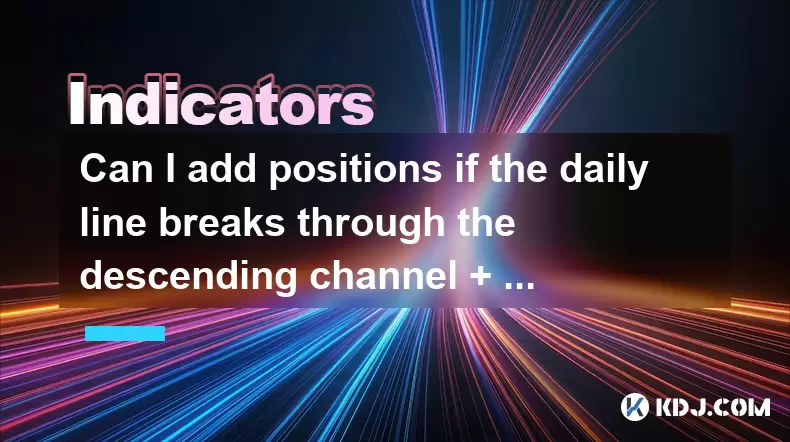
Can I add positions if the daily line breaks through the descending channel + the 30-minute moving average is in a bullish arrangement?
Jun 30,2025 at 11:00pm
Understanding the Descending Channel BreakoutWhen a daily line breaks through a descending channel, it indicates a potential shift in market sentiment from bearish to bullish. A descending channel is formed by drawing two parallel trendlines, where the upper trendline connects the lower highs and the lower trendline connects the lower lows. A breakout o...
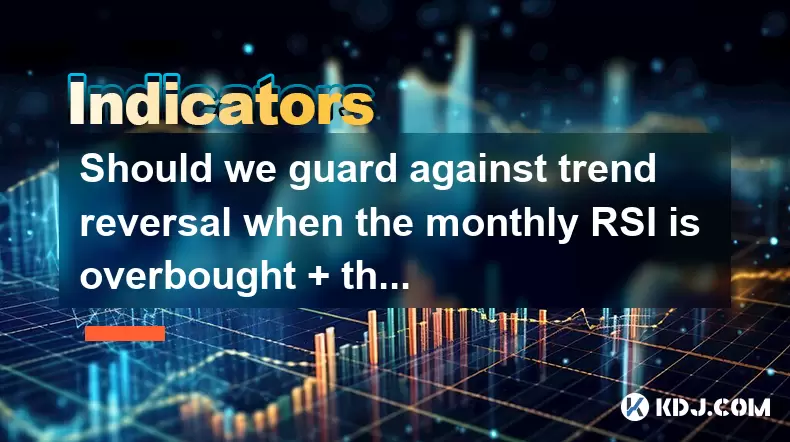
Should we guard against trend reversal when the monthly RSI is overbought + the weekly line has a long upper shadow?
Jun 30,2025 at 11:35pm
Understanding RSI Overbought Conditions in CryptocurrencyThe Relative Strength Index (RSI) is a momentum oscillator commonly used in technical analysis to identify overbought or oversold conditions in an asset. When the monthly RSI of a cryptocurrency reaches above 70, it is generally considered overbought, suggesting that the asset may be due for a pul...
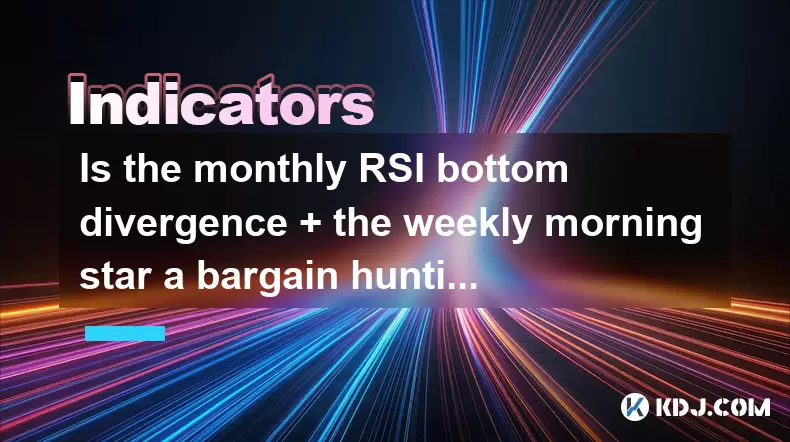
Is the monthly RSI bottom divergence + the weekly morning star a bargain hunting opportunity?
Jun 30,2025 at 09:57pm
Understanding RSI Bottom Divergence in Monthly TimeframesThe Relative Strength Index (RSI) is a momentum oscillator commonly used to identify overbought or oversold conditions in the market. When traders refer to a monthly RSI bottom divergence, they're observing a situation where the price makes a lower low, but the RSI makes a higher low on the monthl...
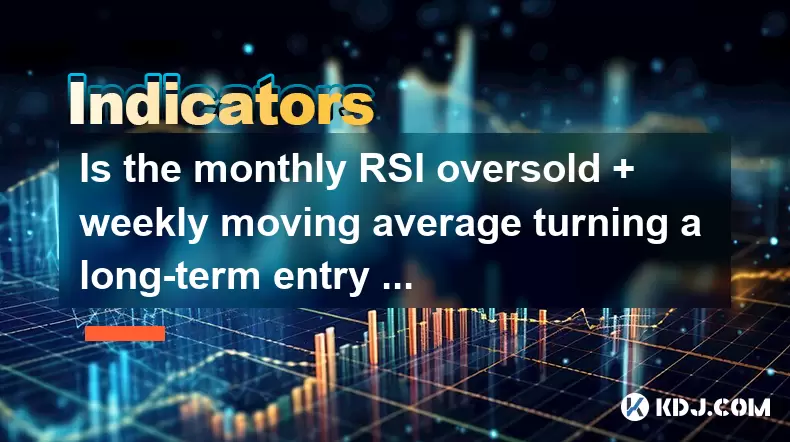
Is the monthly RSI oversold + weekly moving average turning a long-term entry signal?
Jun 30,2025 at 11:42pm
Understanding RSI and Its Role in Cryptocurrency TradingThe Relative Strength Index (RSI) is a momentum oscillator commonly used by traders to identify overbought or oversold conditions in the market. In the context of cryptocurrency, where volatility reigns supreme, understanding how RSI behaves on different timeframes becomes crucial. When the monthly...
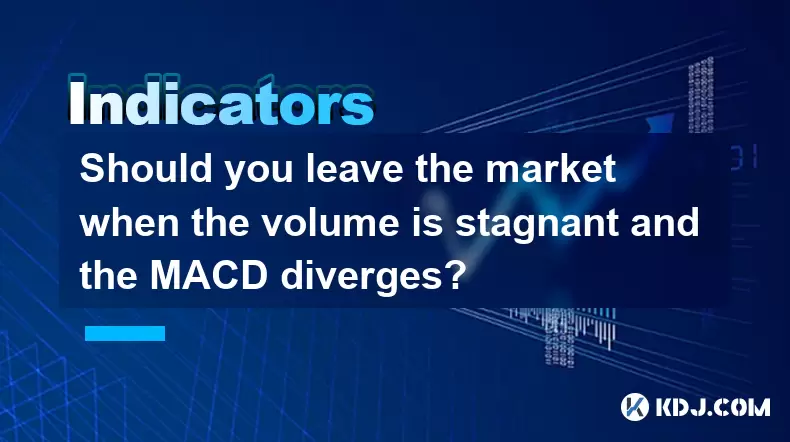
Should you leave the market when the volume is stagnant and the MACD diverges?
Jun 30,2025 at 09:36pm
Understanding Volume Stagnation in Cryptocurrency TradingIn the realm of cryptocurrency trading, volume plays a crucial role in determining the strength of price movements. When volume remains stagnant over an extended period, it suggests that neither buyers nor sellers are showing strong conviction. This often leads to sideways movement or consolidatio...
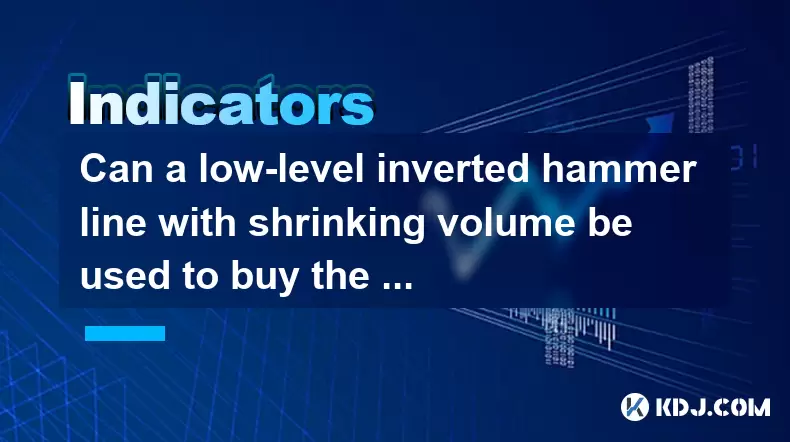
Can a low-level inverted hammer line with shrinking volume be used to buy the bottom?
Jul 01,2025 at 12:08am
Understanding the Low-Level Inverted Hammer LineA low-level inverted hammer line is a candlestick pattern that typically appears at the bottom of a downtrend. It consists of a small real body near the top of the trading range with a long upper shadow and little or no lower shadow. This formation suggests that buyers attempted to push prices higher but w...

Can I add positions if the daily line breaks through the descending channel + the 30-minute moving average is in a bullish arrangement?
Jun 30,2025 at 11:00pm
Understanding the Descending Channel BreakoutWhen a daily line breaks through a descending channel, it indicates a potential shift in market sentiment from bearish to bullish. A descending channel is formed by drawing two parallel trendlines, where the upper trendline connects the lower highs and the lower trendline connects the lower lows. A breakout o...

Should we guard against trend reversal when the monthly RSI is overbought + the weekly line has a long upper shadow?
Jun 30,2025 at 11:35pm
Understanding RSI Overbought Conditions in CryptocurrencyThe Relative Strength Index (RSI) is a momentum oscillator commonly used in technical analysis to identify overbought or oversold conditions in an asset. When the monthly RSI of a cryptocurrency reaches above 70, it is generally considered overbought, suggesting that the asset may be due for a pul...

Is the monthly RSI bottom divergence + the weekly morning star a bargain hunting opportunity?
Jun 30,2025 at 09:57pm
Understanding RSI Bottom Divergence in Monthly TimeframesThe Relative Strength Index (RSI) is a momentum oscillator commonly used to identify overbought or oversold conditions in the market. When traders refer to a monthly RSI bottom divergence, they're observing a situation where the price makes a lower low, but the RSI makes a higher low on the monthl...

Is the monthly RSI oversold + weekly moving average turning a long-term entry signal?
Jun 30,2025 at 11:42pm
Understanding RSI and Its Role in Cryptocurrency TradingThe Relative Strength Index (RSI) is a momentum oscillator commonly used by traders to identify overbought or oversold conditions in the market. In the context of cryptocurrency, where volatility reigns supreme, understanding how RSI behaves on different timeframes becomes crucial. When the monthly...

Should you leave the market when the volume is stagnant and the MACD diverges?
Jun 30,2025 at 09:36pm
Understanding Volume Stagnation in Cryptocurrency TradingIn the realm of cryptocurrency trading, volume plays a crucial role in determining the strength of price movements. When volume remains stagnant over an extended period, it suggests that neither buyers nor sellers are showing strong conviction. This often leads to sideways movement or consolidatio...

Can a low-level inverted hammer line with shrinking volume be used to buy the bottom?
Jul 01,2025 at 12:08am
Understanding the Low-Level Inverted Hammer LineA low-level inverted hammer line is a candlestick pattern that typically appears at the bottom of a downtrend. It consists of a small real body near the top of the trading range with a long upper shadow and little or no lower shadow. This formation suggests that buyers attempted to push prices higher but w...
See all articles

























































































